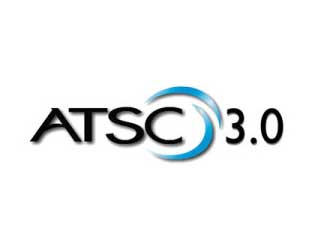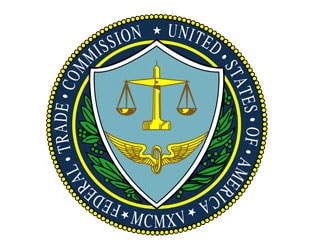A member of powerful House Energy and Commerce Committee‘s Subcommittee on Communications and Technology, chaired by Rep. Marsha Blackburn (R-Tenn.), has written directly to FCC Chairman Ajit Pai demanding “a complete understanding of the overall impacts of this new standard.”
Michigan Democrat Debbie Dingell, who succeeded husband John Dingell in Congress, notes that the next-gen TV standard known as ATSC 3.0 “could be an exciting new broadcast technology standard.”
She added, “Broadcasters and other stakeholders deserve credit in developing this new standard that will undoubtedly bring significant benefits to consumers including more localized safety warnings and improved picture quality. Enhancing these capabilities will help our nation’s broadcasters perform their critically important mission of providing the American people with free over-the-air programming.”
But, there are privacy issues and questions about equipment upgrades that Dingell would like Pai’s response on.
“It is my understanding that the new standard also contemplates targeted advertisements that would be ‘relevant to you and what you actually might want to see,'” she says. “This raises questions about how advertisers and broadcasters will gather the demographic information from consumers which are necessary to do targeted advertisements, and what privacy protections will be in place for consumers. It is also my understanding that ATSC 3.0 will not be backwards-compatible, which means consumers will be forced to replace their televisions if it is widely adopted.”
The cost to Americans of replacing their current televisions is one of the key counter-arguments against the shift to ATSC 3.0 brought to Washington by anti-tax groups and the smallest of MVPDs, who argue that higher cable TV bills will result as they will have no choice but to pass the cost of upgrades to their customers.
That’s why Dingell argues that “we should be having a robust dialogue about the privacy implications of this new standard as well as ensuring we are doing everything possible for consumers in any transition.”
Timing is of the essence: The Commission is set to consider a Report and Order and Further Notice of Proposed Rulemaking authorizing the use of ATSC 3.0 during the Open Commission Meeting one week from today (11/16).
“Although privacy concerns were raised in the record, it was not addressed at all in the draft order released by the Commission,” Dingell says. “In fact, the word ‘privacy’ is not even mentioned a single time in the entire draft order the FCC will soon take up.”
Dingell then asked Pai to answer a lengthy series of questions, which are as follows:
- You noted in response to my questions at a recent FCC Oversight Hearing before the House Committee on Communications and Technology that the Federal Trade Commission (FTC) will have a role in overseeing the privacy of ATSC 3.0 users. Has FCC staff coordinated with FTC staff to discuss these issues to ensure the FCC does not approve a technical standard that fails to adequately protect consumers’ privacy or security?
- It is my understanding that there are several different business models for targeted advertisements under ATSC 3.0. One model includes building transmitters similar to cell towers around the DMA to do regional advertising. I understand this is a very capital intensive process with a high operating expense, but that it would not require the collection of personal information from consumers. Is that correct? If no personal information from consumers is required, what standards will be applied to determine whether my constituents would choose to see targeted advertisements or not?
- It is my understanding that a second business model for targeted advertisements involves delivery via the internet. In this scenario will the age, sex, address, and other demographic information would be collected in order to deliver targeted advertising? Would consumers have to provide consent in order for their data to be collected? Could they choose not to provide their demographic information and not receive targeted advertisements but still receive the enhanced picture quality and public safety communications? If a consumer decides to provide their personal information, who is responsible for protecting it?
- It is my understanding that another business model would use an encrypted signal, even for over-the-air television broadcasts that have traditionally been free. Would this require consumers to use some sort of encryption key to access the signal? Would such a key require a consumer to enter their age, address, gender, and other demographic information? If the free over-the-air signal is encrypted and needs demographic information from a consumer to access it, do you still consider this service to be “free” in your opinion?
- There have been media reports that ATSC 3.0 would allow for better collection of audience data and would use this information as a sales tool for the advertisers, rather than relying on Nielsen or other measurement data. Will the new standards permit broadcasters to collect data on age, sex, income, address, or any other personal information? How will they be permitted to use this information? Will consumers be able to opt-out of having their data collected for this purpose?
- It appears that new ATSC 3.0-capable TV sets could be susceptible to hacking, malware, and other potential computer viruses that could lead to predatory advertising instead of legitimate commercials. Is there anything contained in the proposal to address this potential problem?
- How many TV sets are in the country today, and what will happen to them when ATSC 3.0 is deployed? How many TV sets will need to be replaced when broadcasters are not required to carry both the current ATSC 1.0 signal and the new ATSC 3.0 signal? What would you estimate the approximate cost to consumers to replace these sets?
It remains to be seen as to if, and when, Pai will respond in full to the questions.
For Dingell, she says, “Answers to my questions will help give the American people confidence that we are adequately considering all of the impacts this new standards will have on consumers.”





